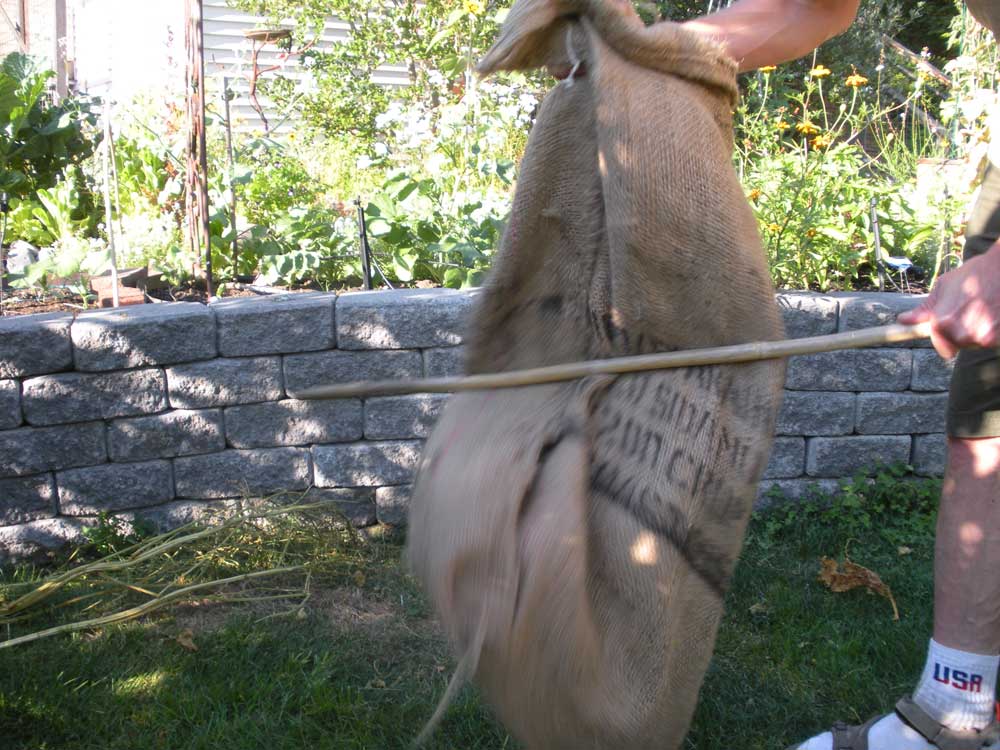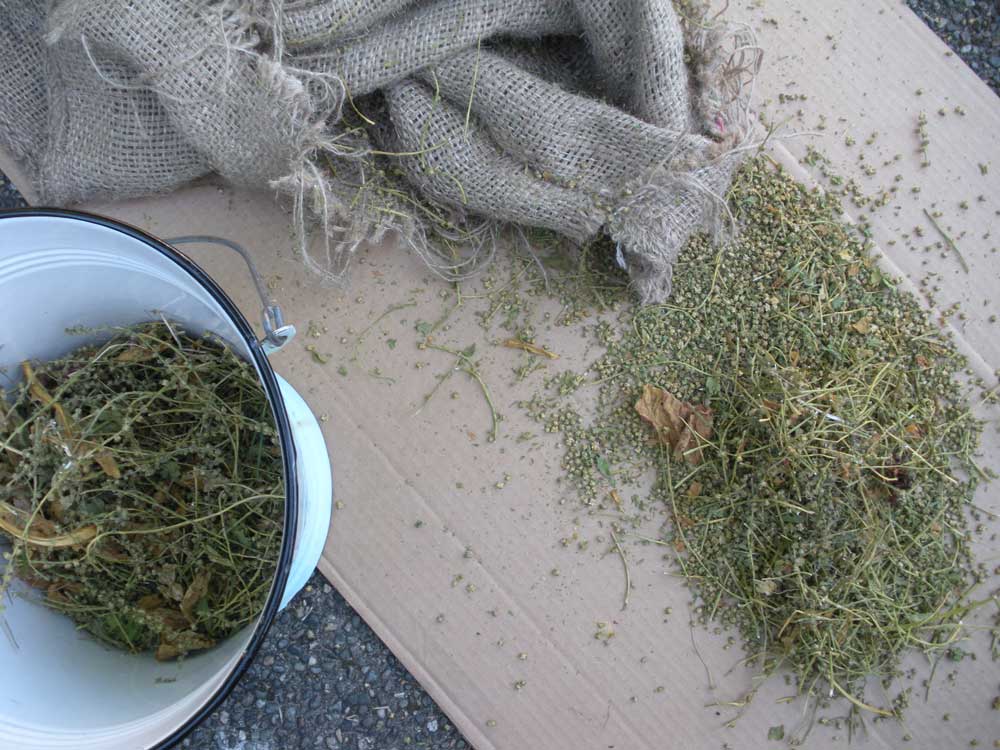Saving seeds can be as easy as beating a bag with a stick.
Well, almost.
I try to save seeds of one crop each summer. Since good seed-saving generally requires a large quantity of seeds, I don’t have room in my garden to do very many crops. For instance, you need a huge quantity of Rainbow Chard seeds to get the “rainbow” mix in future plantings and to get enough vigorous, healthy seed.
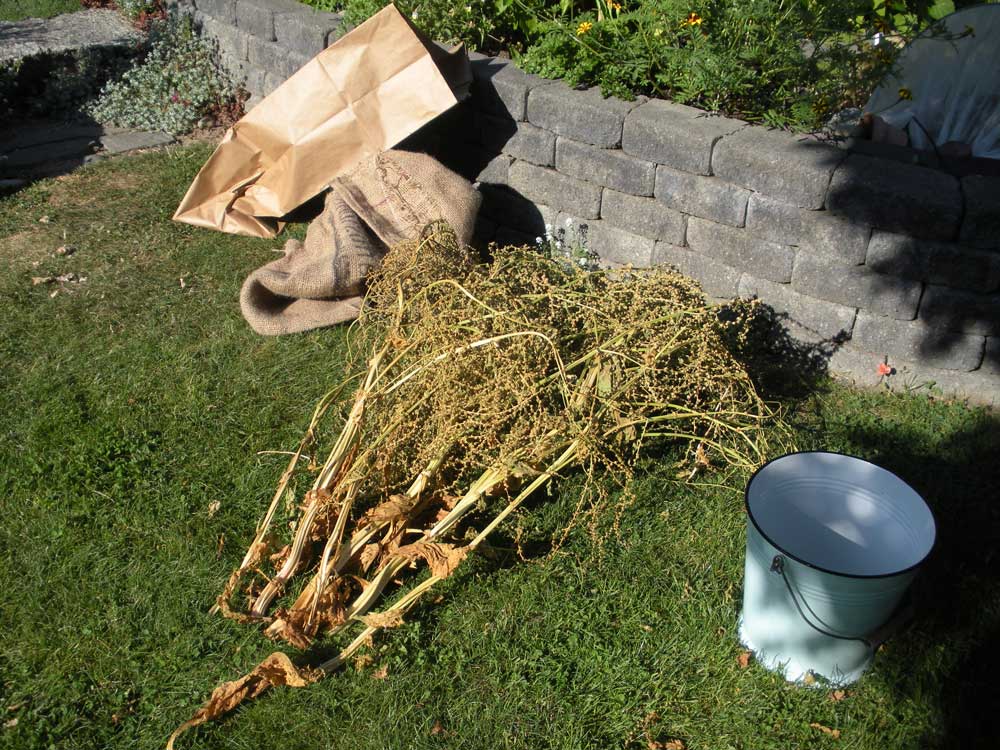
I started with the stick-and-bag method on a big harvest of Rainbow Chard. I put the tall chard stems, covered with seeds, in the bag to try to easily get the seeds off the stems.
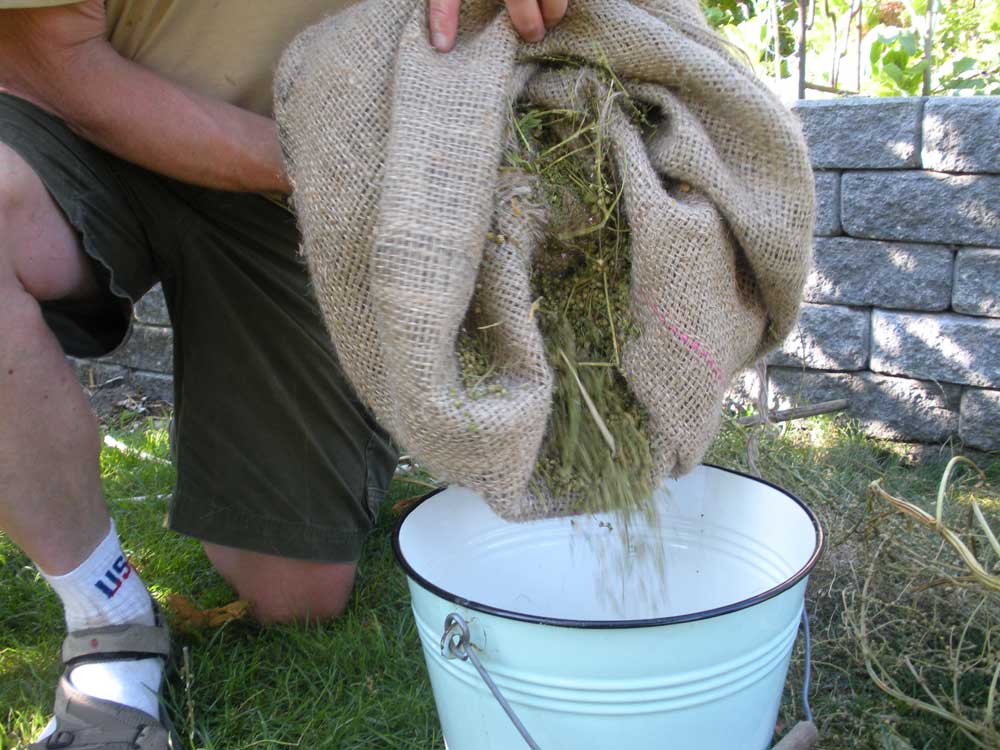
To remove the rest of the small stems, I tested doing it by hand and with a screen.
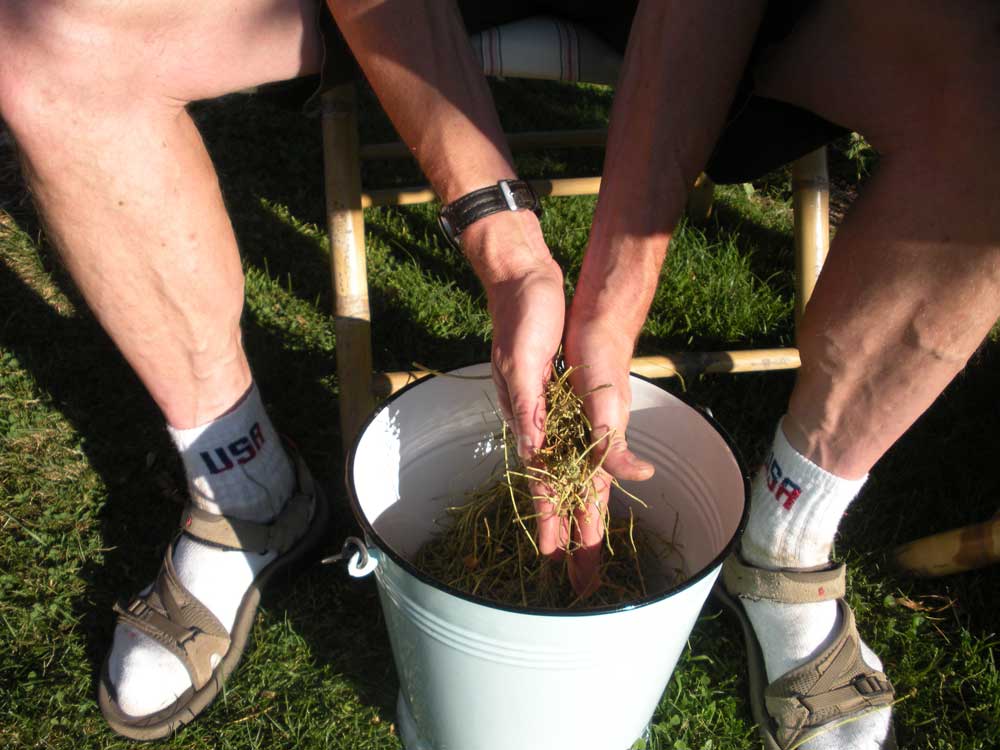
The screen worked much better. Wearing gloves, I rubbed the seeds and stems against the screen until the stems broke free. Much of the dried stem material fell through the screen and the seed stayed on top.
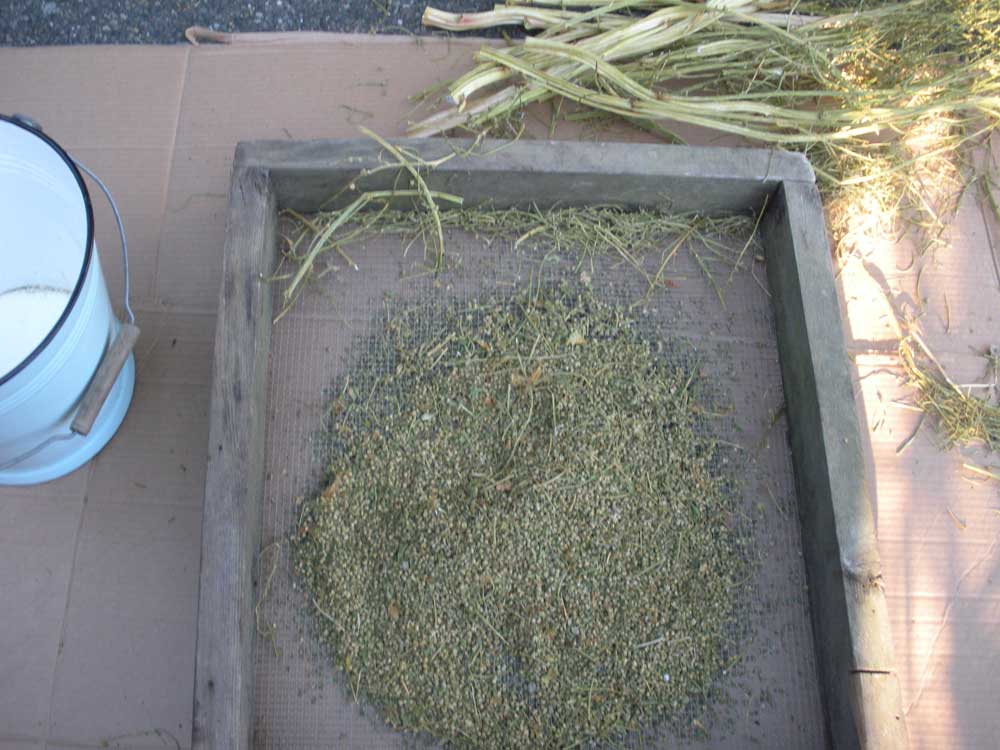
When the seeds were mostly free of their stems, I spread them out on a large tray for a couple weeks to continue drying. They had gotten pretty dry on the stems when I pulled up the plants. Then I let them continue to dry on the stems until they were a light brown. But I wanted them to harden a bit more before I put them in jars to store for the winter.
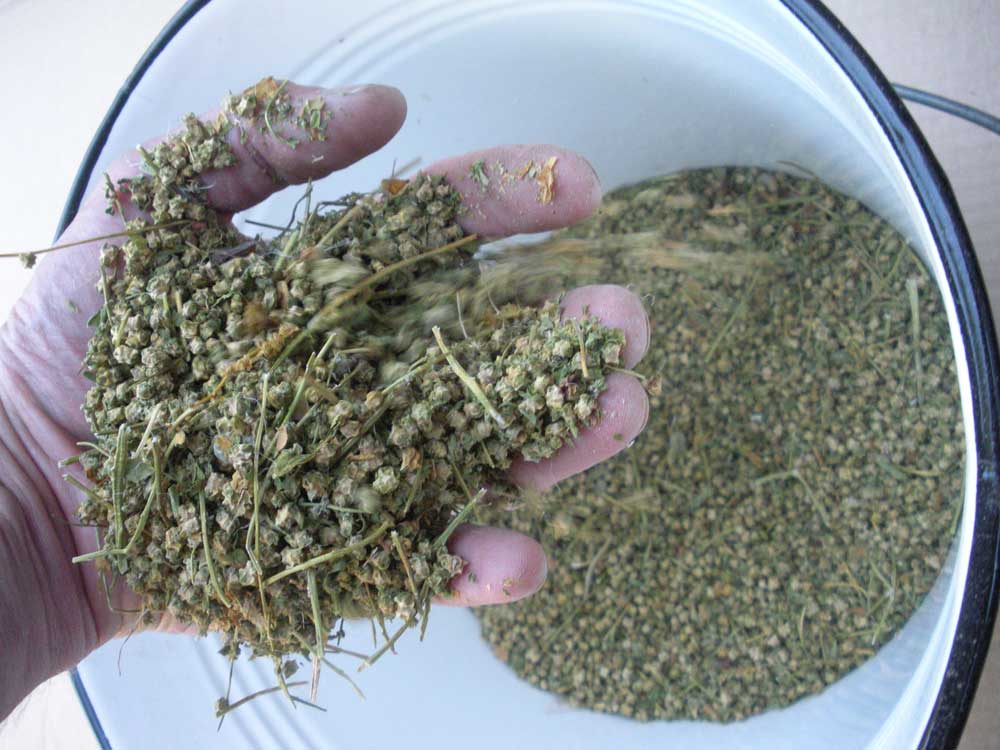
A bit of stem or chaff is acceptable in with the seeds. It can be manually separated when the seeds are laid out to dry or when you bag the seeds up for storage.
